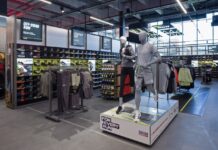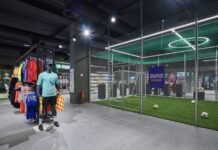The COVID-19 pandemic forced retailers to pivot quickly. With recovery underway and customers returning to physical shops in larger numbers, retailers have continued to look to innovate to drive increased traffic back into their outlets. In response to lockdowns, businesses have implemented techniques that have proven to be incredibly beneficial and complement the traditional retail experience.
While Radio Frequency Identification (RFID) had been relied upon by many retailers before the pandemic and throughout national lockdowns, it is now beginning to play an essential role in elevating in-store customer experience and employee effectiveness. Identifying with a high degree of certainty what inventory a retailer has and allocating it correctly to support customer demands in various sales channels will be the foundation for profitable retailers moving forward. This transformation will also empower store associates, who are being asked to operate with reduced staff during a challenging labour market, to continue to elevate customer experience levels.

The Role of RFID Technology
Modern customers now demand a flawless and personalized experience. RFID technology – which significantly improves the accuracy and speed of inventory management – allows employees to focus on providing service for customers instead of manually checking or updating inventory levels. The result is an investment in growing sales and strengthening customer relationships instead of performing time consuming and inaccurate manual tasks. With a challenging labor market and reduced store staff sizes, it is more critical than ever for retailers to free up their employees to drive key company initiatives and capitalize on customer traffic to drive sales.
RFID technology creates a smooth transition throughout the supply chain, ultimately increasing customer satisfaction and elevating the in-store experience. An effective item-level RFID solution increases inventory accuracy up to 99%, substantially improving upon the accuracy that manual stock counts can provide and in a fraction of the time. The deployment of RFID technology in fashion – based on the flow of stock, finished goods, stock level, and time-efficiency – has a significant impact on both outcomes of efficiency and operational effectiveness, directly affecting both employee productivity and customer experience. Employee morale and retention rates also increase as over tasked associates are free to engage customers and execute a balanced workload as the result of inventory technology.
The efficiency of the supply chain directly contributes to the satisfaction of a store’s customers. With integrated higher inventory accuracy and visibility, in-store associates can identify specific inventory levels of items with a high degree of certainty in real time. This allows staff to inform customers on size information, product availability, and additional stores with on-hand inventory to enable them to spend more time face-to-face with the customers, rather than searching for items in the warehouse or stockroom.
In-Store Implementation
As retailers continue to emerge from the pandemic, the implementation of innovative technology in physical stores is intrinsic to delivering an in-store experience that aligns with changing customer expectations and empowers employees to meet those expectations.. As we move into a new era of retailing, a significant challenge for retailers continues to be managing their inventory in order to effectively execute an omnichannel sales strategy. However, by leveraging item-level RFID technology, retailers have the necessary support to find long-term success in their brick-and-mortar stores and beyond. As a result, more retailers are turning to RFID to boost their inventory efficiency and modernize their approach to in-store inventory management.
As the world continues to work towards the “new normal”, retailers need to focus on executing the fundamentals of their business models-fulfilling orders consistently, providing high levels of customer service, and putting their store associates in a position to drive results in terms of sales and profitability. As customer shopping patterns have evolved and the potential for other disruptions to physical retail shopping remains, it is more important than ever for retailers to accurately identify their inventory in order to achieve consistent omnichannel execution.Implementing retail technology that allows retailers to track their inventory and manage their on-hand stock levels provides both a path forward as retail continues to recover from the pandemic, and the foundation of long-term business success.















